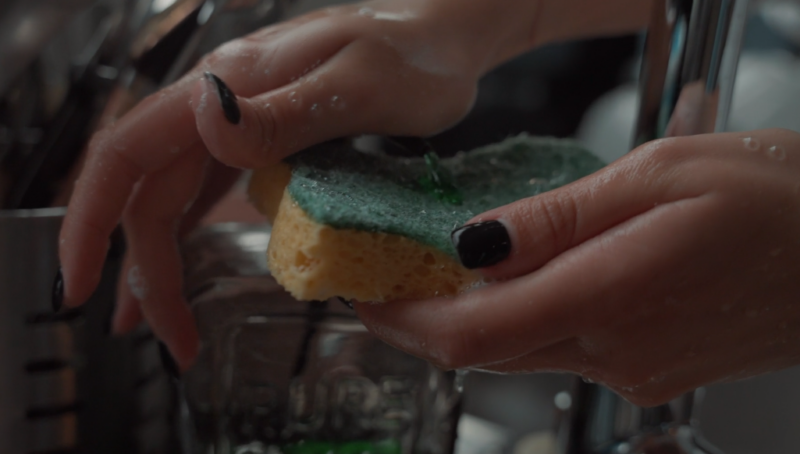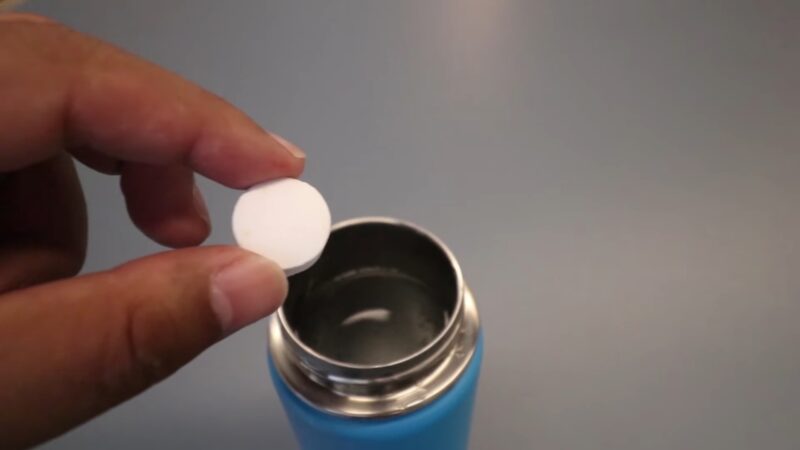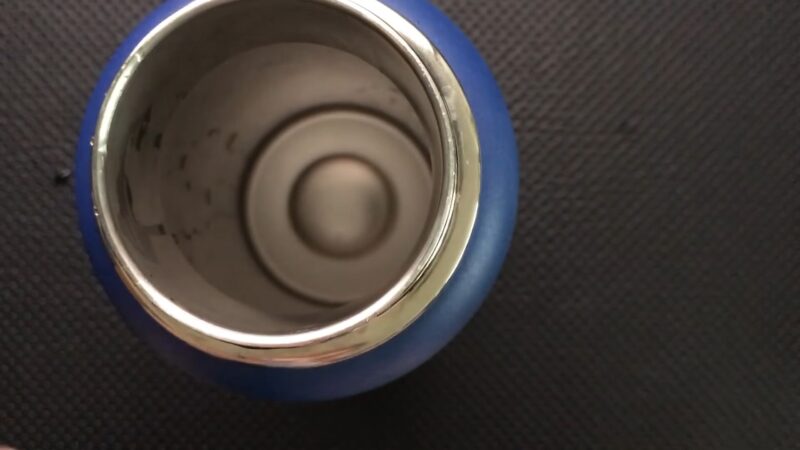A hydro flask is a type of insulated container that can keep your beverages hot or cold for hours. It is made of stainless steel and has a double-wall vacuum design that prevents heat transfer. Cleaning and maintaining it is essential to prevent bacteria growth, odor, and stains that can affect the taste and quality of your drinks. It also helps to extend the lifespan and appearance of your container.
Using a hydro flask has many advantages over other types of containers. For example, it can help you save money and reduce environmental impact by avoiding disposable plastic bottles. It can also keep your drinks at the optimal temperature for longer, whether you prefer coffee, tea, water, or juice. Moreover, it is durable and stylish, with various colors, sizes, and accessories to choose from.
There are different methods for cleaning your flask, depending on how dirty it is and what kind of drink you had in it. Some of the most common methods are washing with dish soap, using vinegar, baking soda, or denture tablets, and sanitizing with boiling water or bleach. Choosing the one that serves your needs the best requires some research.
In this article, we will explain each method in detail and provide some tips and warnings for each one.
Dish Soap

The first method is washing it with dish soap. This is a simple and effective way to remove dirt, grease, and residue from your container. Here are the steps for washing your hydro flask with dish soap:
- Disassemble your hydro flask. Remove the lid, the straw (if any), and any other accessories from your container.
- Wash the pieces separately with hot, soapy water. Use a soft sponge or cloth to gently scrub the outside and inside. Use a bottle brush to reach the bottom and the corners of your container. Wash the lid, the straw, and any other accessories with the same soap and water.
- Rinse the pieces thoroughly with clean water. Make sure to remove all the soap and bubbles from your flask and its parts.
- Dry the pieces upside down. Place them on a clean towel or a drying rack. Let them air dry completely before reassembling them.
Some tips and warnings for washing your hydro flask with dish soap are:
- Use a mild dish soap that does not contain harsh chemicals or abrasives. Avoid using bleach, ammonia, or chlorine-based cleaners, as they can damage the stainless steel and the coating of your hydro flask.
- Do not soak the lid or the straw for too long, as they can absorb water and cause mold or mildew to grow. If you notice any signs of mold or mildew, discard the lid or the straw and replace them with new ones.
- Pay attention to the drinking spouts and straws, as they can harbor bacteria and germs. Use a small brush or a pipe cleaner to clean the inside and the outside of the spouts and straws. Rinse them well and dry them thoroughly.
Vinegar
Vinegar is a natural and effective way to remove stains, odors, and bacteria from your container. These are the instructions to use it properly:
- Add half a cup of vinegar to your hydro flask. Use distilled white vinegar, as it is the most suitable for cleaning stainless steel.
- Swirl the vinegar around your flask. Make sure to cover the entire inside surface of your container with the vinegar.
- Let the vinegar sit for five minutes. This will allow the vinegar to loosen and dissolve any dirt, residue, or mineral deposits in your hydro flask.
- Scrub the inside and bottom with a bottle brush. Use a gentle circular motion to remove any stubborn stains or spots from your container.
- Rinse it with warm water. Fill it with warm water and shake it well. Pour out the water and repeat until the vinegar smell is gone.
When it comes to the additional tips, you should be aware about:
- If your hydro flask is very dirty or has a strong odor, you may need to repeat the process with more vinegar or let it sit for longer.
- Do not use vinegar on the lid or the straw, as it can damage the rubber or plastic parts. Wash them separately with dish soap and water.
- Vinegar can also be used to clean the outside of your hydro flask, but be careful not to spill it on the coating or the logo, as it can cause discoloration or fading.
Baking Soda
Baking soda is a natural and effective way to remove stains, odors, and bacteria from your container. It also helps to neutralize any acidic or alkaline residues that may affect the taste of your drinks. The process is quite simple, and here are the most important details:
- Add two teaspoons of baking soda to your flask. Use pure baking soda, not baking powder or any other product that contains additives.
- Fill your hydro flask with hot water. Use water that is as hot as you can safely handle, but not boiling. The hot water will help the baking soda dissolve and react with the dirt and residue in your container.
- Cover your hydro flask. Use the lid or a piece of plastic wrap to seal your container. This will prevent the water from evaporating and the baking soda from losing its effectiveness.
- Let your flask stand overnight. Place your container in a safe and dry place, away from direct sunlight or heat sources. The longer you let it stand, the better the results will be.
- Wash and rinse your hydro flask in the morning. Remove the cover and pour out the water and the baking soda. Use a bottle brush to scrub the inside and bottom of your container. Rinse your flask with clean water until the water runs clear and the baking soda smell is gone.
You should also be cautious about:
- If your hydro flask is very dirty or has a strong odor, you may need to use more baking soda or let it stand for longer. You can also add some lemon juice or vinegar to the water and baking soda mixture to boost its cleaning power.
- Do not use baking soda on the lid or the straw of your flask, as it can damage the rubber or plastic parts. Wash them separately with dish soap and water.
- Baking soda can also be used to clean the outside of your hydro flask, but be careful not to spill it on the coating or the logo, as it can cause discoloration or fading.
Denture Tablets

They contain ingredients such as baking soda, citric acid, and sodium percarbonate that can remove stains, odors, and bacteria from your container. Here are the steps for using denture tablets to clean your hydro flask:
- Drop one or two denture tablets into your hydro flask. Use unscented denture tablets, as scented ones may leave a taste or smell in your container.
- Fill your hydro flask with warm water. Use enough water to cover the denture tablets and the entire inside surface of your container.
- Let the denture tablets fizz for 15 to 30 minutes. The fizzing action will help the denture tablets dissolve and release their cleaning agents into your flask.
- Wash and rinse your hydro flask. Pour out the water and the denture tablets. Use a bottle brush to scrub the inside and bottom of your container. Rinse it with clean water until the water runs clear and the denture tablet smell is gone.
Also, be aware of:
- If your hydro flask is very dirty or has a strong odor, you may need to use more denture tablets or let them fizz for longer. You can also add some vinegar to the water and denture tablet mixture to boost its cleaning power.
- Do not use denture tablets on the lid or the straw of your hydro flask, as they can damage the rubber or plastic parts. Wash them separately with dish soap and water.
- Denture tablets can also be used to clean the outside of your flask, but be careful not to spill them on the coating or the logo, as they can cause discoloration or fading.
Boiling Water

Boiling water is a simple and effective way to kill any germs, bacteria, or mold that may be lurking in your container. It can also help to remove any unpleasant tastes or smells from your hydro flask. The process is quite simple and straightforward:
- Fill a large pot with water. Use enough water to completely submerge your hydro flask and its lid (without the straw) in the pot.
- Bring the water to a boil. Place the pot on a stove and turn on the heat. Wait until the water reaches a rolling boil.
- Submerge your hydro flask and the lid (without the straw) in the water for 10 minutes. Use tongs or a wooden spoon to carefully lower your hydro flask and its lid into the boiling water. Make sure they are fully immersed in the water. Leave them in the water for 10 minutes.
- Dry your hydro flask and the lid upside down. Use tongs or a wooden spoon to carefully lift your hydro flask and its lid out of the boiling water. Place them on a clean towel or a drying rack. Let them air dry completely before reassembling them.
There are some things to avoid:
- Do not boil the straw of your hydro flask, as it can melt or deform. Wash it separately with dish soap and water.
- Do not use this method too often, as it can damage the stainless steel and the coating of your hydro flask. Use it only when necessary, such as when your flask has been exposed to mold, bacteria, or other contaminants.
FAQs
How often should I clean my hydro flask?
You should clean your hydro flask at least once a week, or more often if you use it for drinks other than water, such as coffee, tea, juice, or milk. These drinks can leave residues, stains, or odors in your container that can affect the taste and quality of your drinks.
Can I put my hydro flask in the dishwasher, freezer, or microwave?
No, you should not put your hydro flask in the dishwasher, freezer, or microwave, as these appliances can damage the stainless steel and the coating of your container. They can also cause your hydro flask to lose its insulation and leak. You should always wash your hydro flask by hand and avoid exposing it to extreme temperatures.
What should I do if I notice mold or mildew in my hydro flask or its parts?
If you notice mold or mildew in your hydro flask or its parts, you should discard them and replace them with new ones. Mold and mildew can be harmful to your health and can contaminate your drinks. You should also sanitize your hydro flask with boiling water or bleach to kill any remaining spores.
How can I remove scratches or dents from my hydro flask?
Scratches or dents on your hydro flask are normal signs of wear and tear and do not affect the performance or safety of your container. However, if you want to remove them, you can try using a stainless steel polish or a dent remover tool.
How can I customize or personalize my hydro flask?
You can customize or personalize your hydro flask by adding stickers, decals, or accessories to it. You can also use a permanent marker or a paint pen to write or draw on your hydro flask. However, you should avoid covering the logo or the barcode of your hydro flask, as they are required for warranty purposes.
Conclusion
If you follow these methods, you can keep your hydro flask clean and fresh for a long time. You can also maintain your hydro flask by rinsing it after each use, storing it with the lid off, and avoiding putting it in the dishwasher, freezer, or microwave. These practices will help to preserve the stainless steel and the coating of your hydro flask, and prevent any damage or corrosion.








